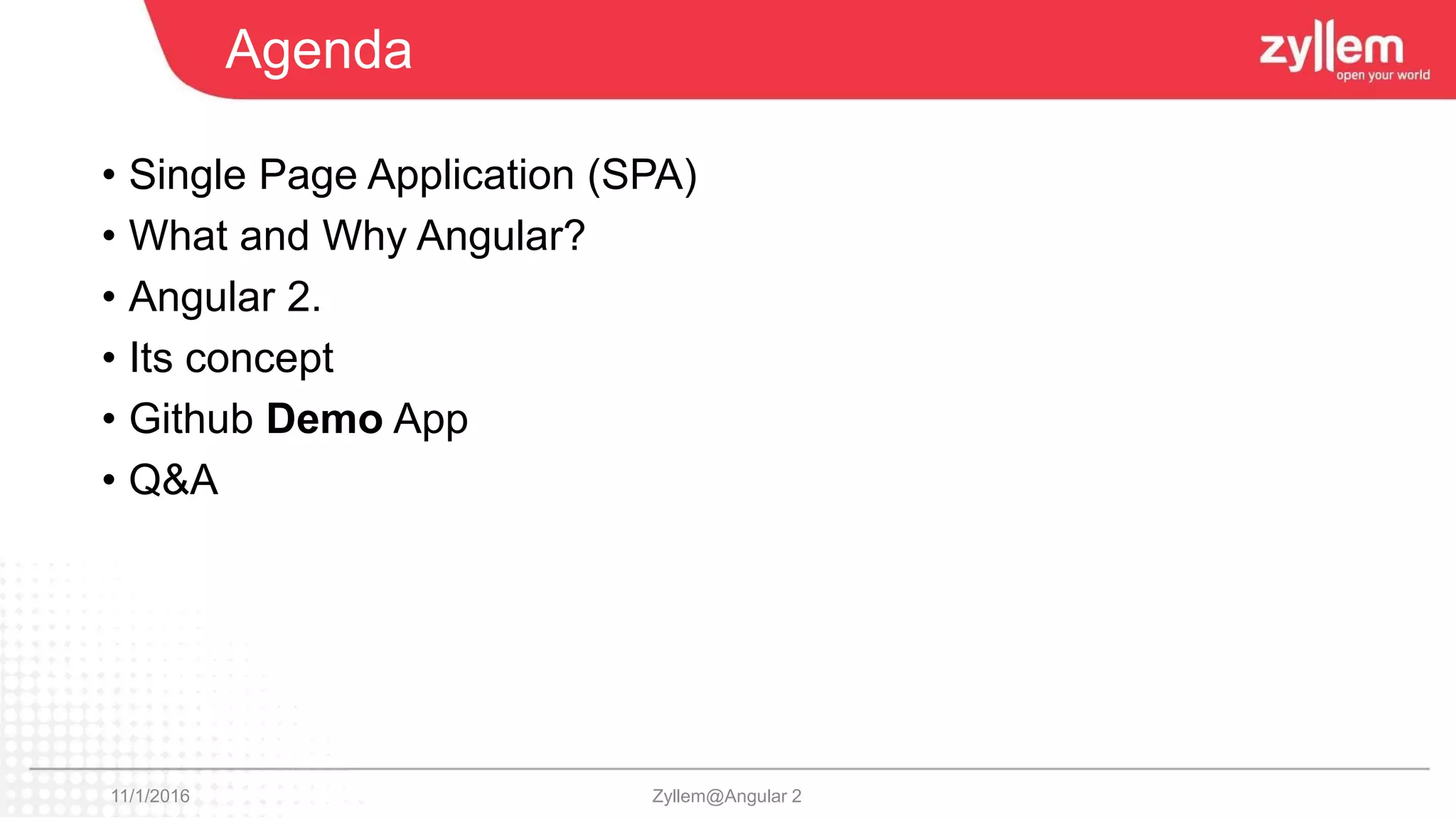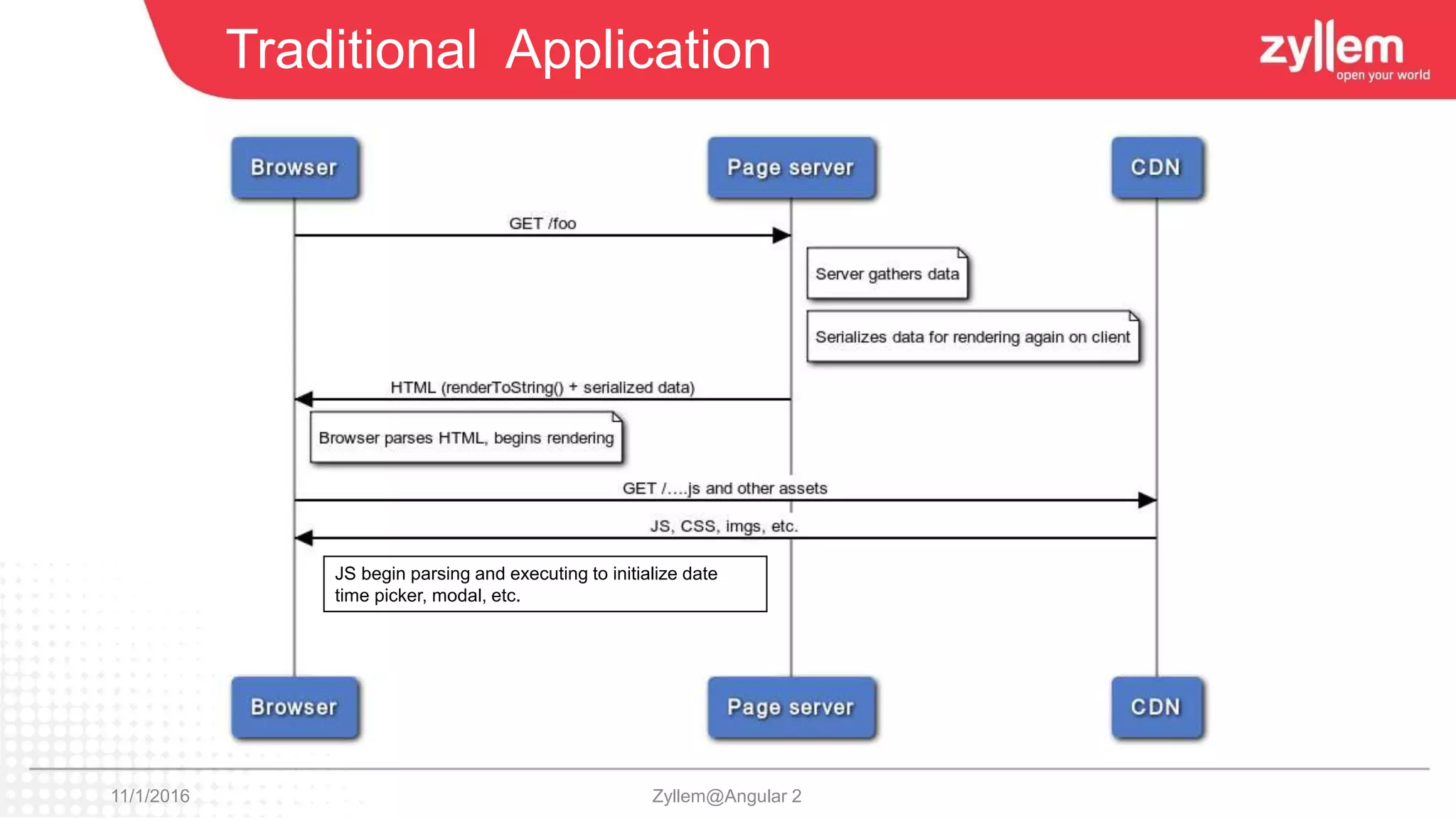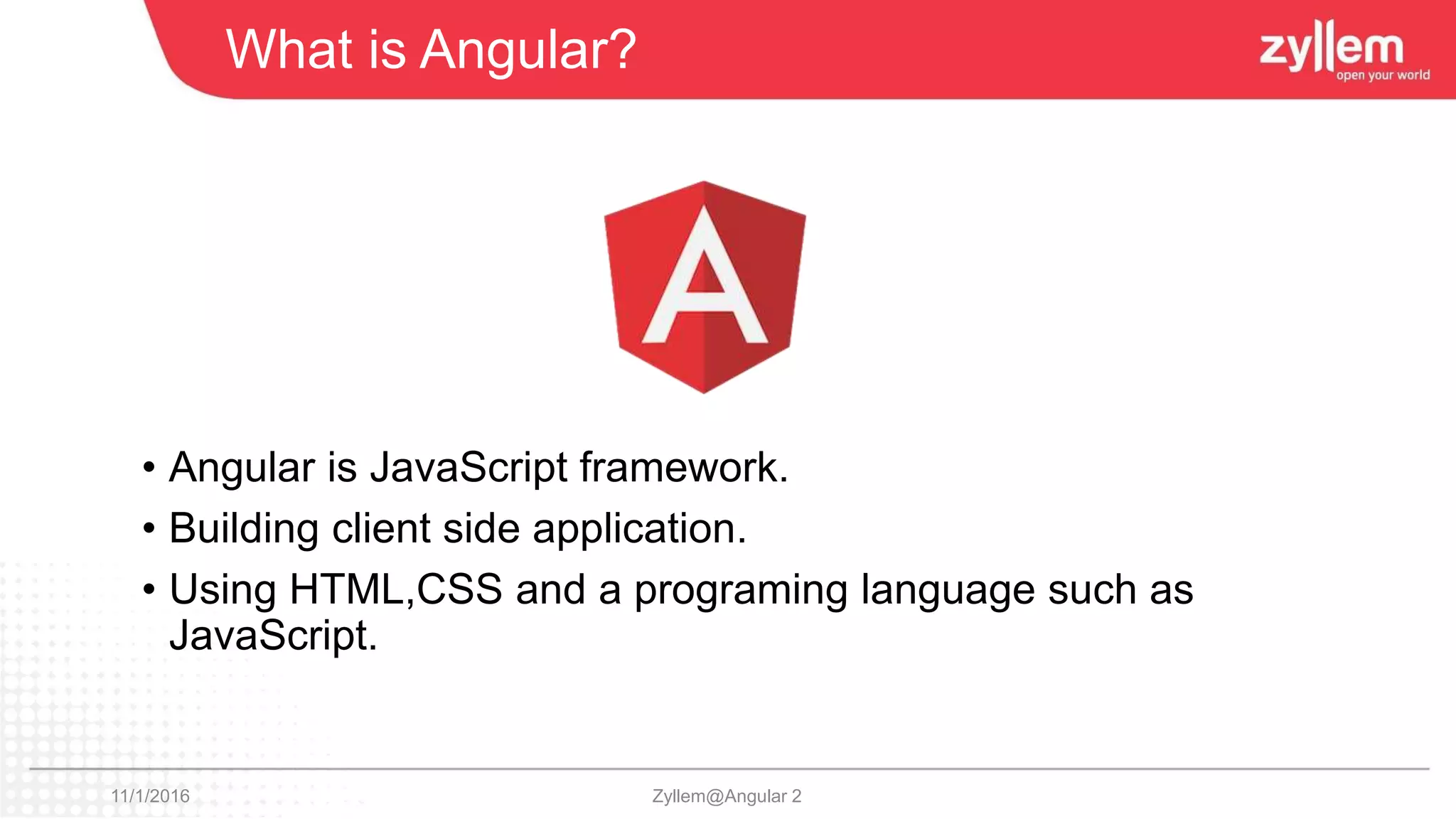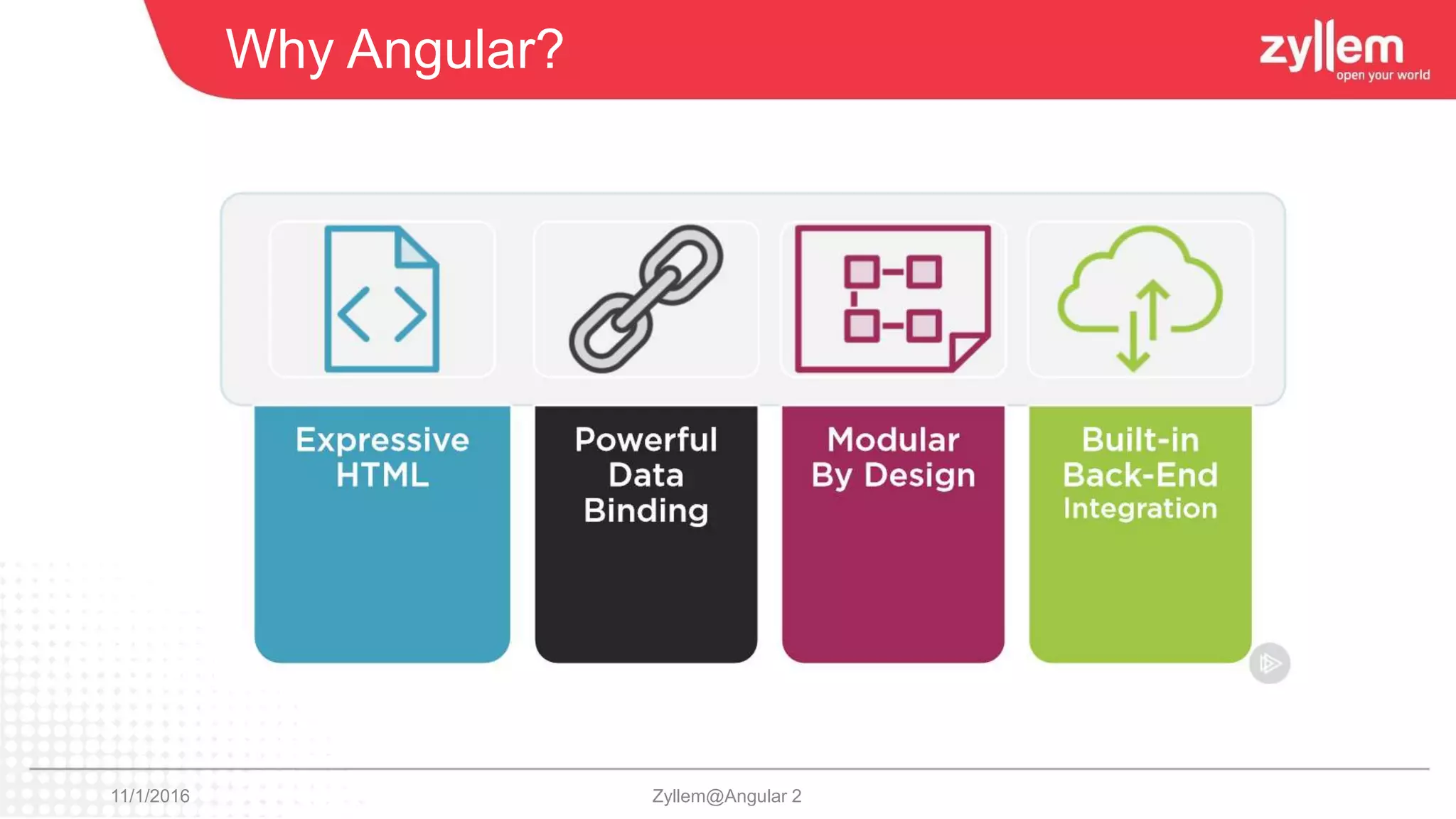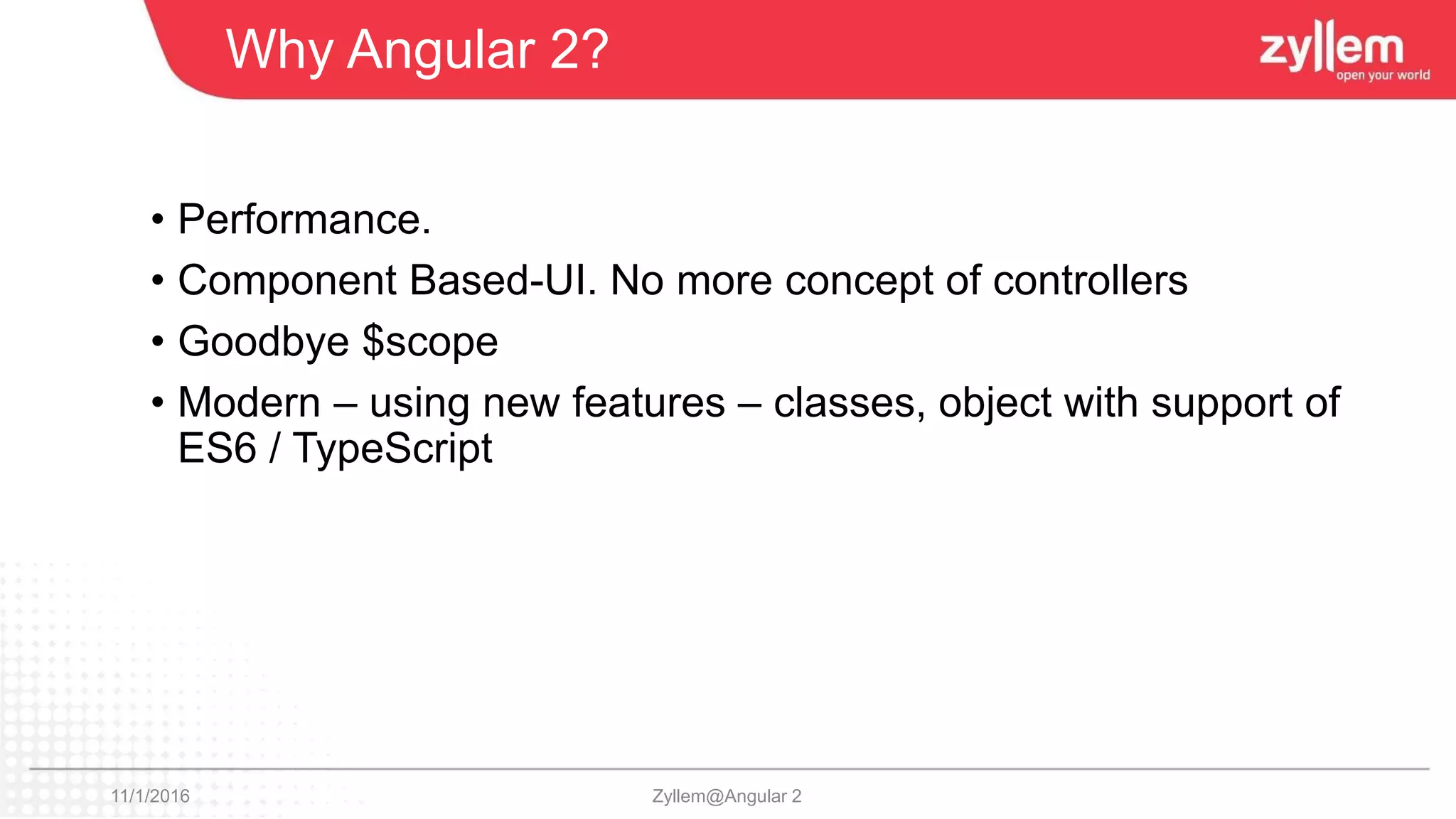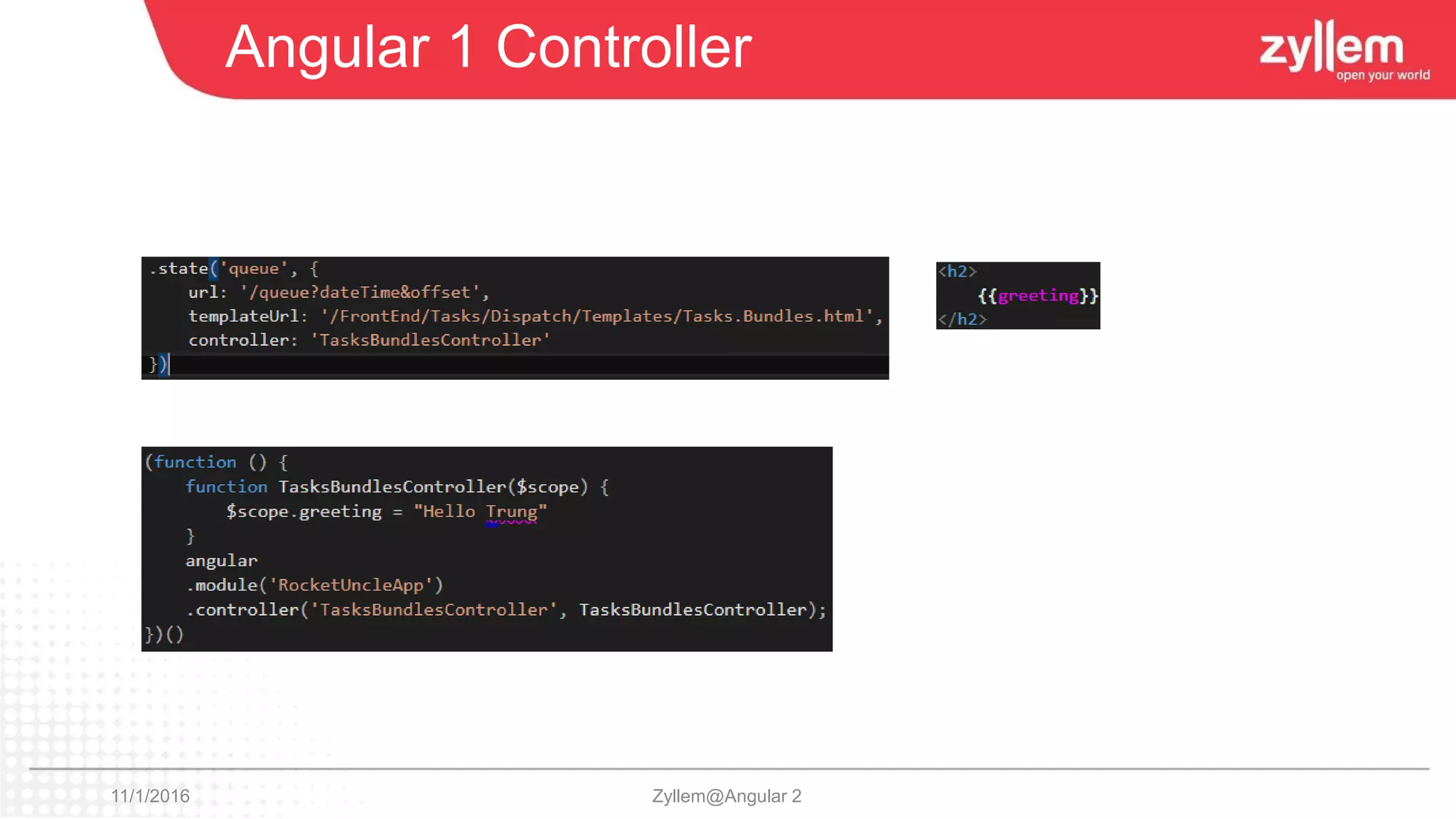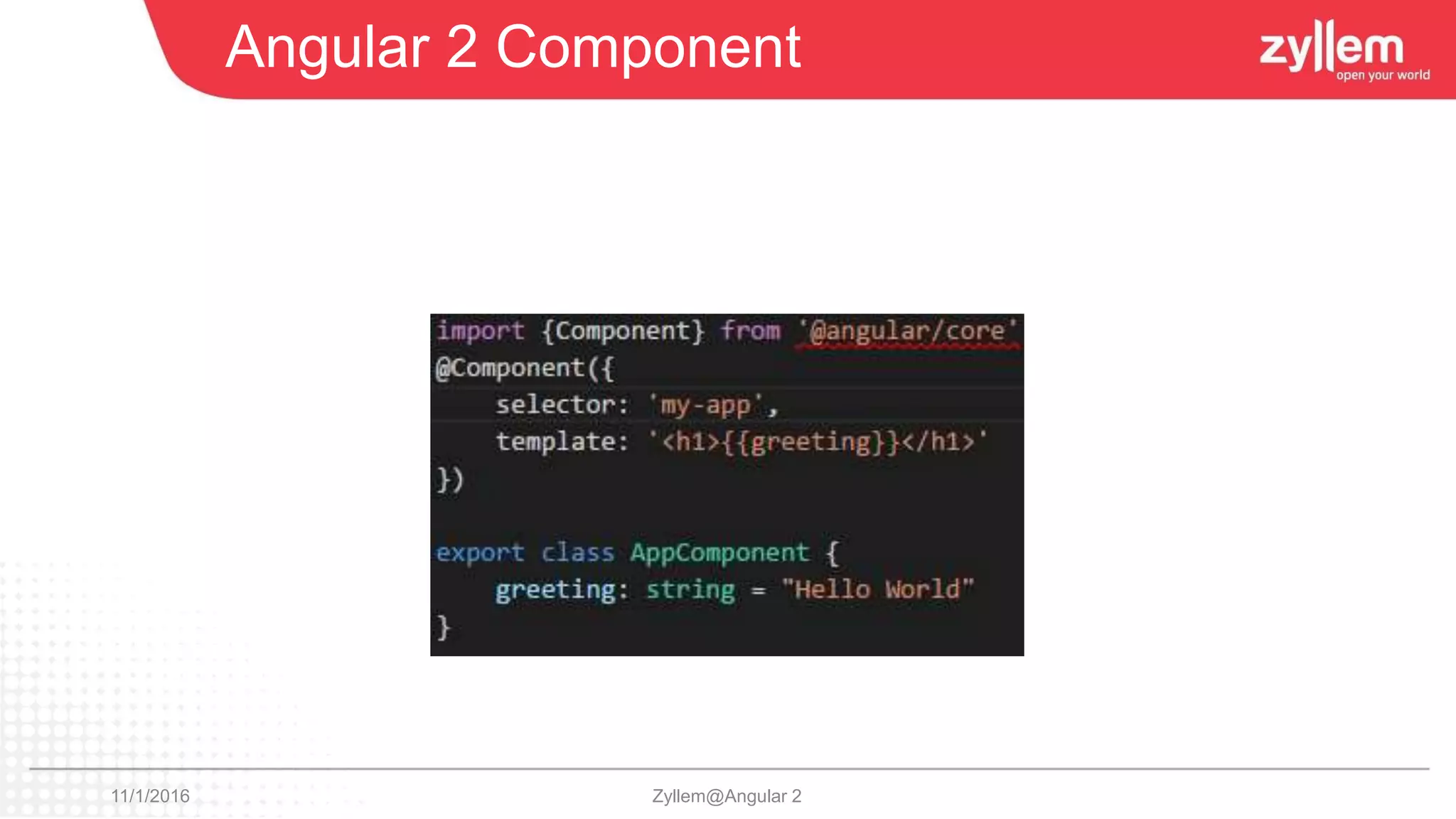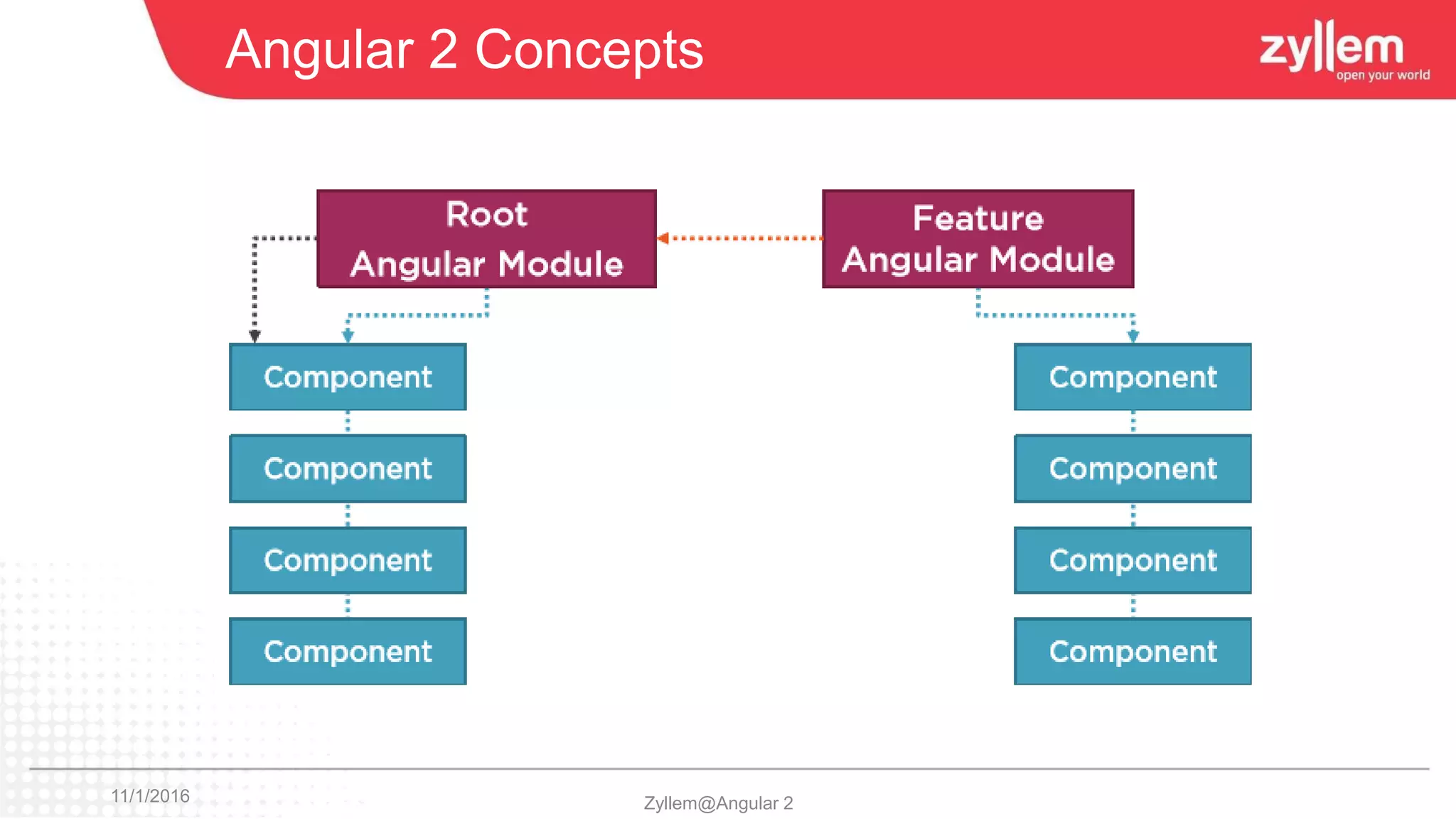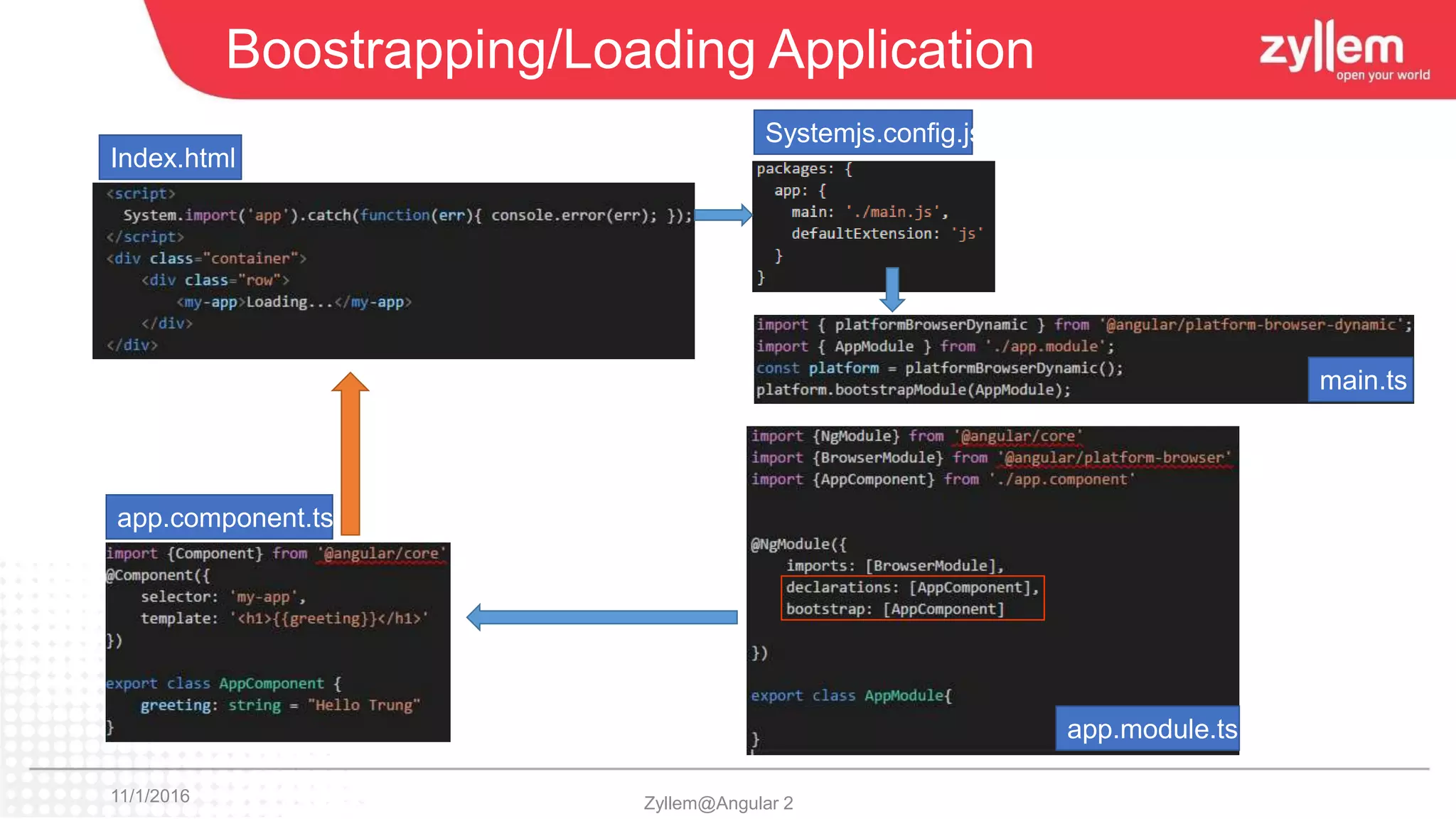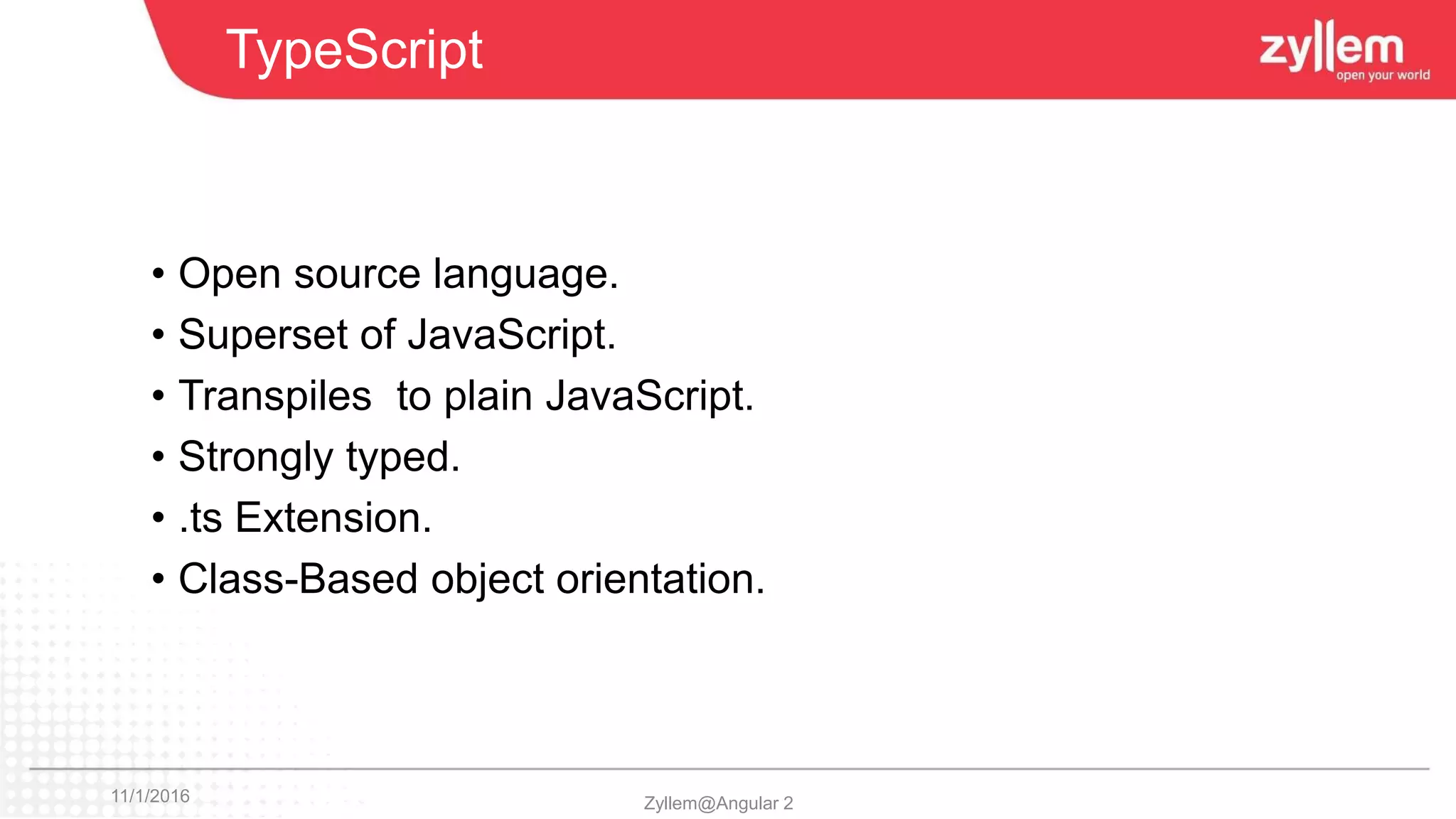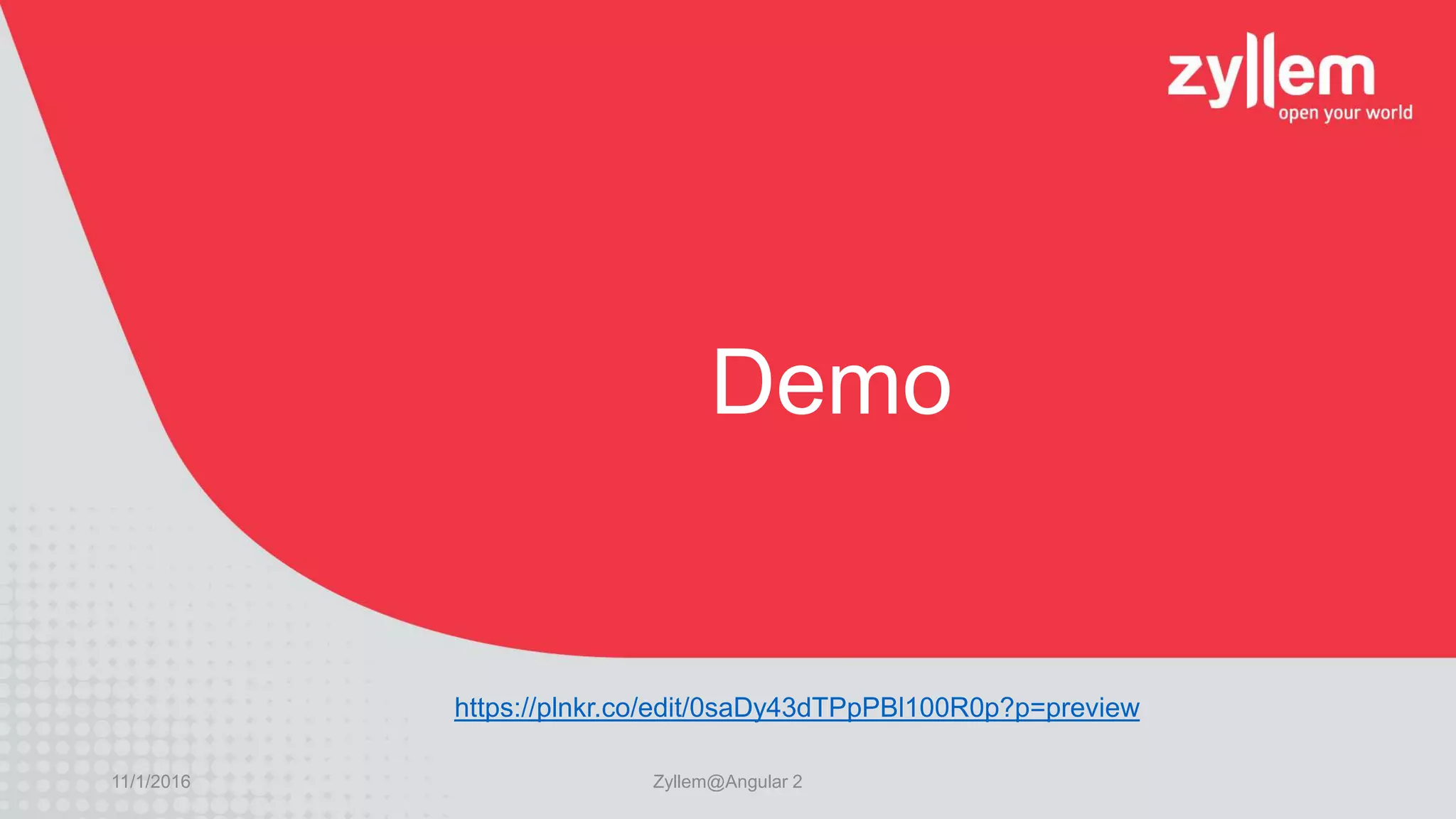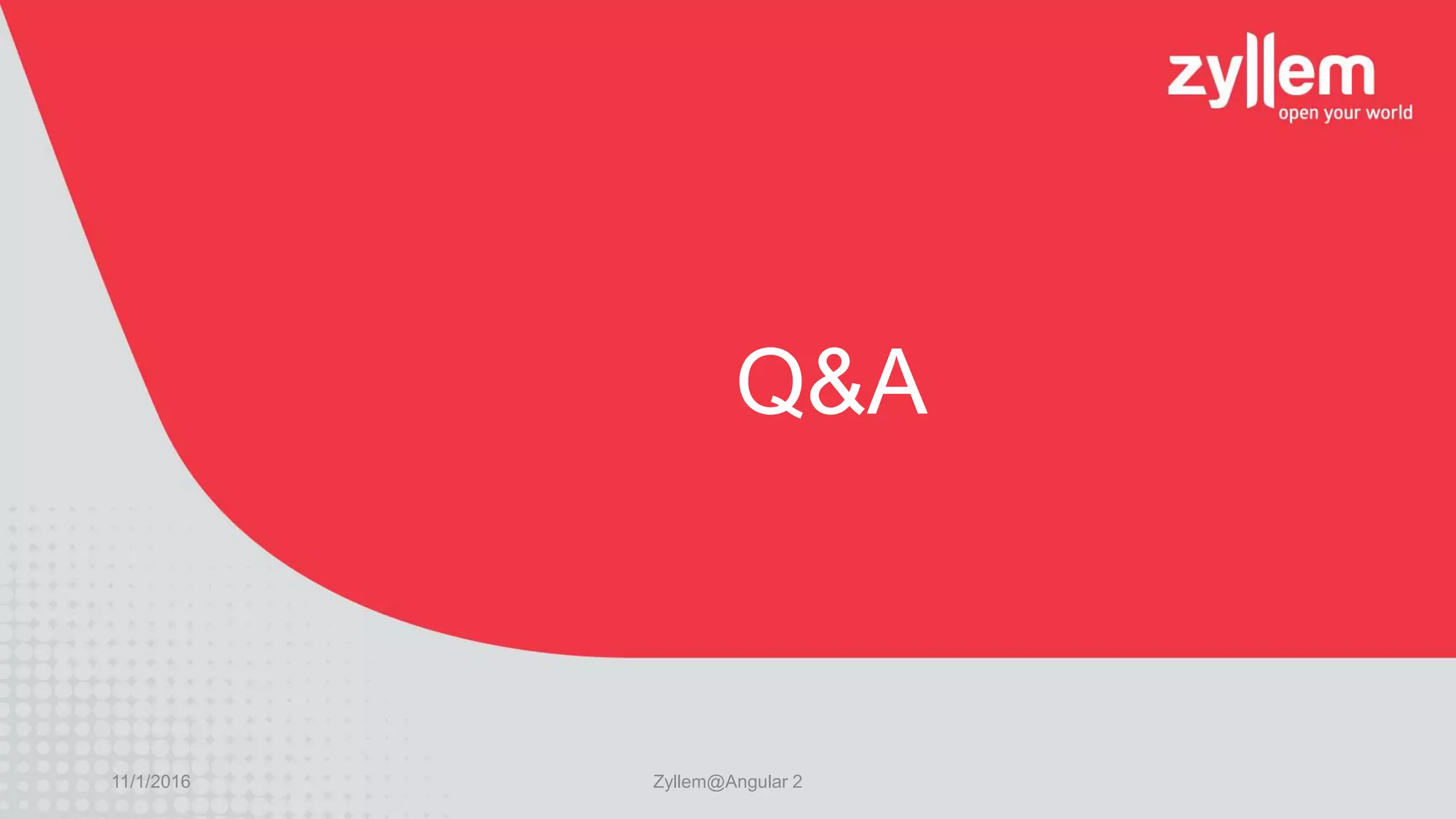The document presents an overview of AngularJS 2, focusing on its features as a JavaScript framework for building single-page applications (SPAs). It highlights the shift from Angular 1 to Angular 2, emphasizing performance improvements, a component-based architecture, and the adoption of modern programming practices with TypeScript. Additionally, it includes a demo link and outlines the basics of Angular components and their structure.

